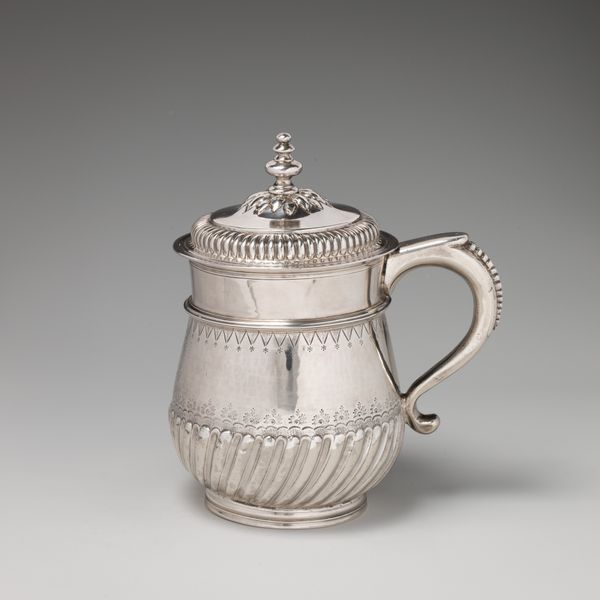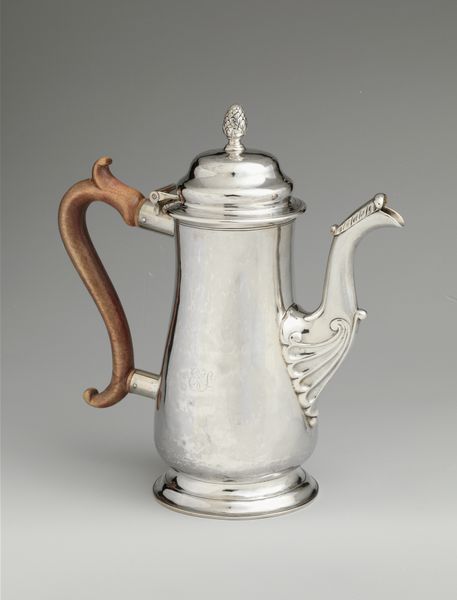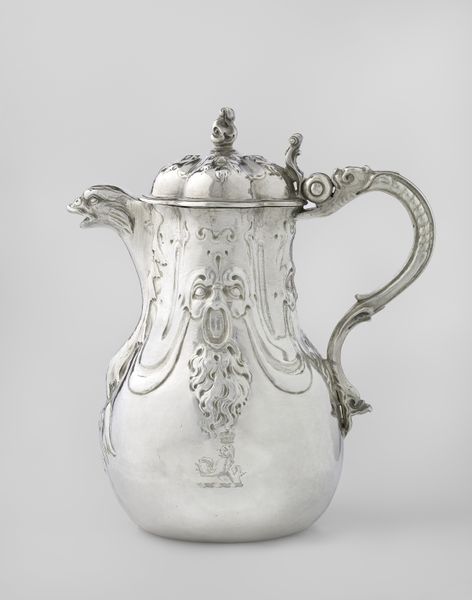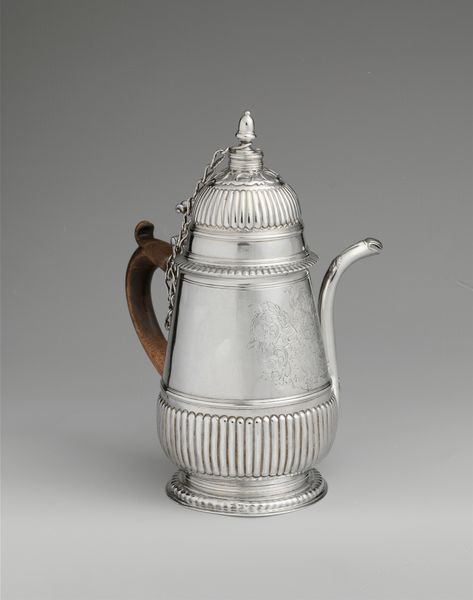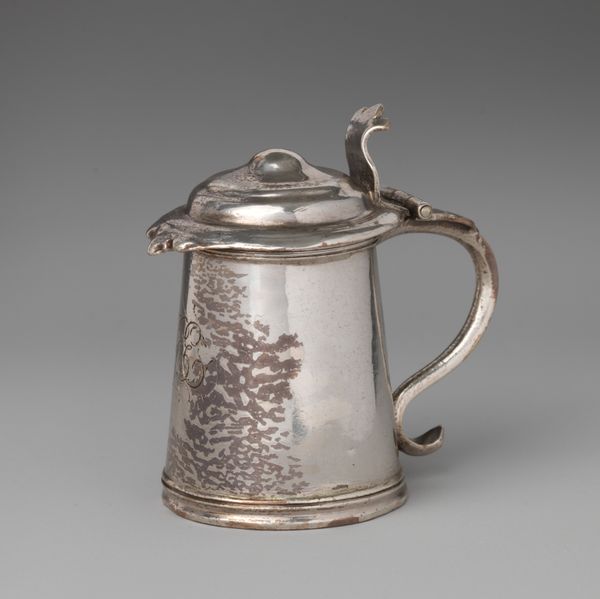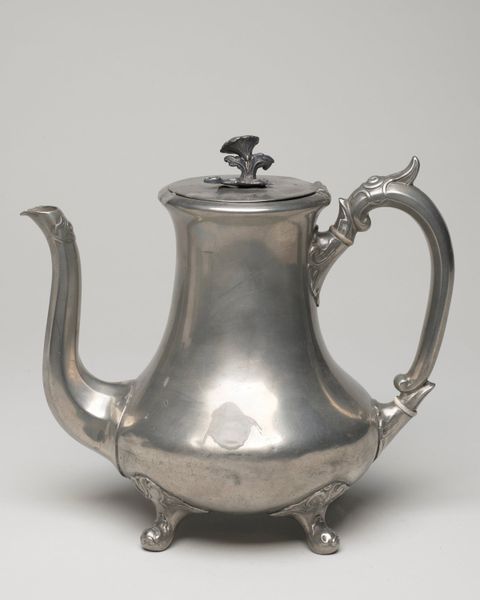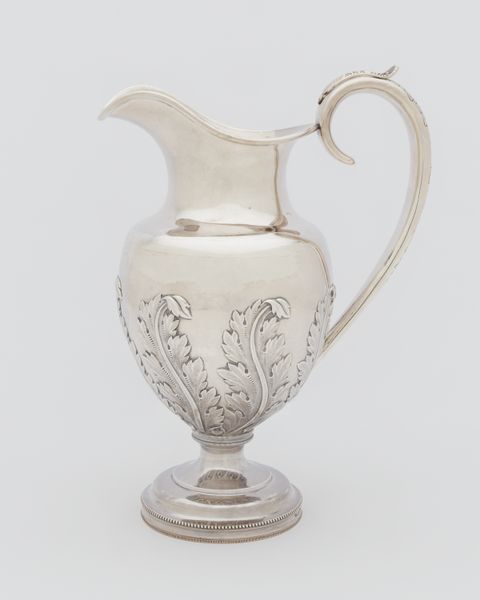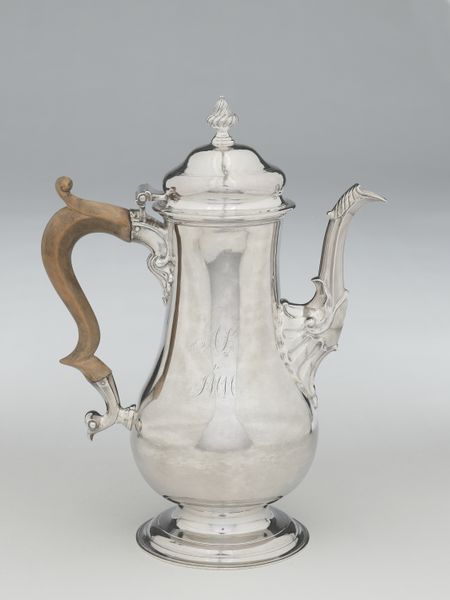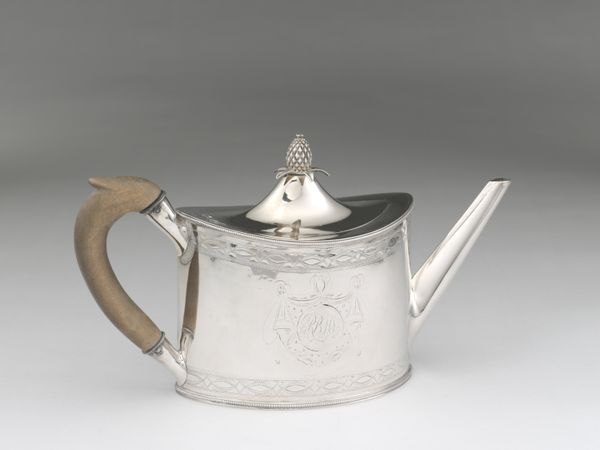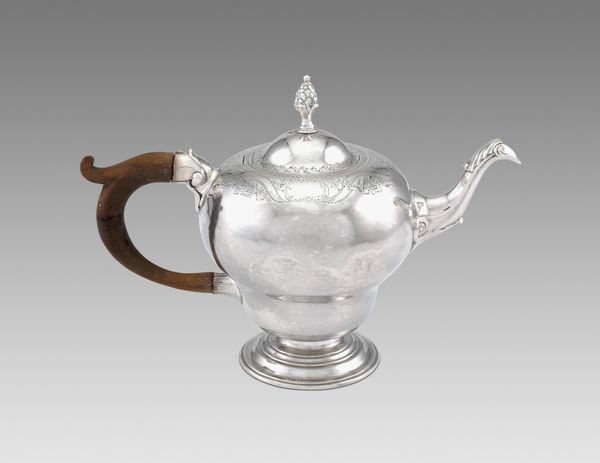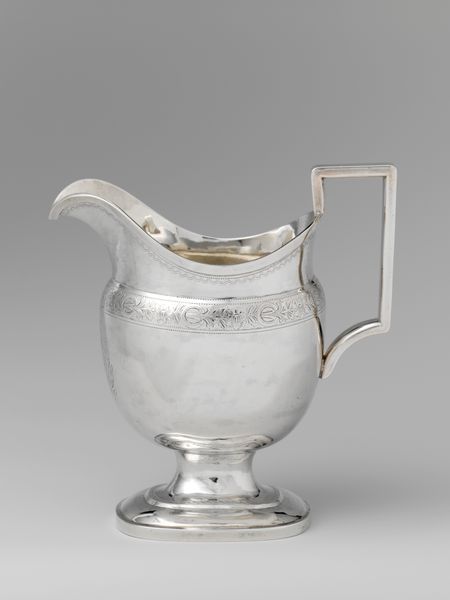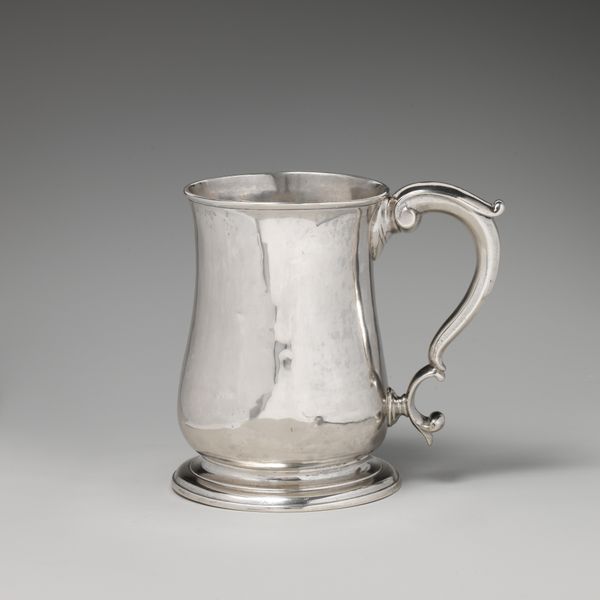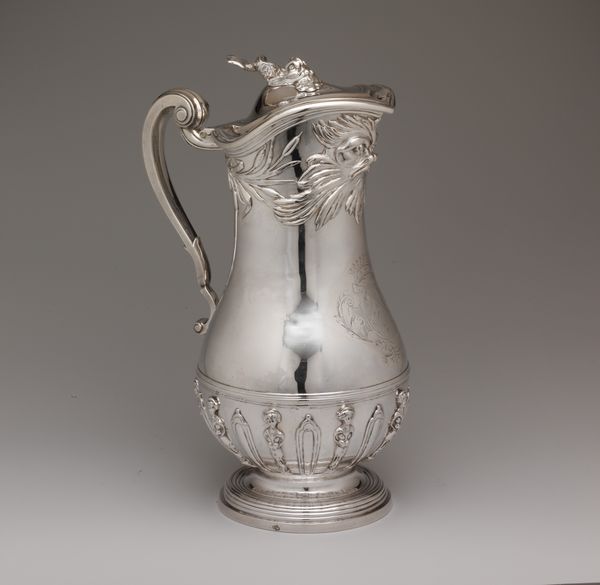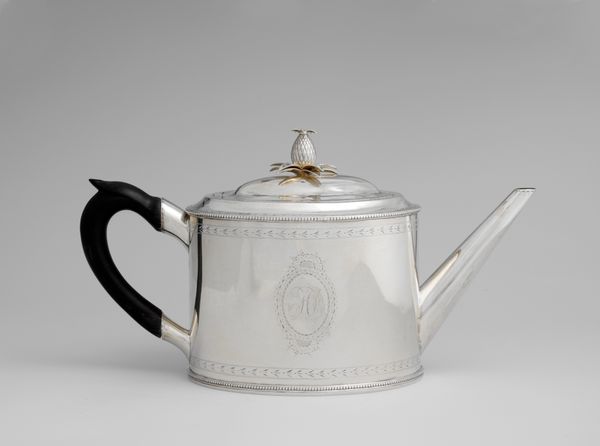
silver, metal
#
neoclacissism
#
silver
#
metal
#
united-states
#
decorative-art
Dimensions: Overall: 10 3/16 x 8 5/16 x 5 3/8 in. (25.9 x 21.1 x 13.7 cm); 32 oz. (994.8 g) Base: Diam. 4 in. (10.2 cm)
Copyright: Public Domain
Editor: We are looking at a "Pitcher" created around 1800-1810, likely by Jesse Churchill. The material is striking – polished silver that reflects light beautifully. Its overall form seems classical, almost austere. What aspects of this object strike you most from a formal perspective? Curator: The purity of form is indeed compelling. Consider the elegant curvature of the body, transitioning smoothly to the defined lines of the neck and the crisp articulation of the spout. Notice the repetition of circular motifs - the base, the lip, the lid, and the finial - these all create a harmonious visual rhythm. Do you perceive a visual hierarchy at play? Editor: I think so, the eye is drawn upwards by those repeated circles, naturally ascending from the solid base to the delicate finial on top. The handle too seems like an integral part of that movement rather than a mere appendage. Curator: Precisely. Note how the handle mirrors the larger curve of the pitcher's body, creating a unified, almost self-contained form. Observe the subtle decorative elements – the beaded band and engraved initials. They introduce textural and calligraphic contrast without disrupting the piece’s fundamental simplicity. Editor: So it’s the interplay of pure form with carefully considered ornamentation. What makes this a neoclassical design, precisely? Curator: It is related to principles from antiquity; think of simplicity, balance, and symmetry. By reducing surface decoration and emphasizing structure and proportion it embraces order and clarity that the earlier baroque lacked. And this, therefore, emphasizes not only its structure but also its inherent elegance. Editor: That’s fascinating. I see now that it’s not merely a simple pitcher but an articulation of historical ideals. Curator: Exactly, seeing the composition as it balances symmetry and simplicity and how those communicate its period. I'll keep a keener eye now for how art and structure reflect their period.
Comments
No comments
Be the first to comment and join the conversation on the ultimate creative platform.
